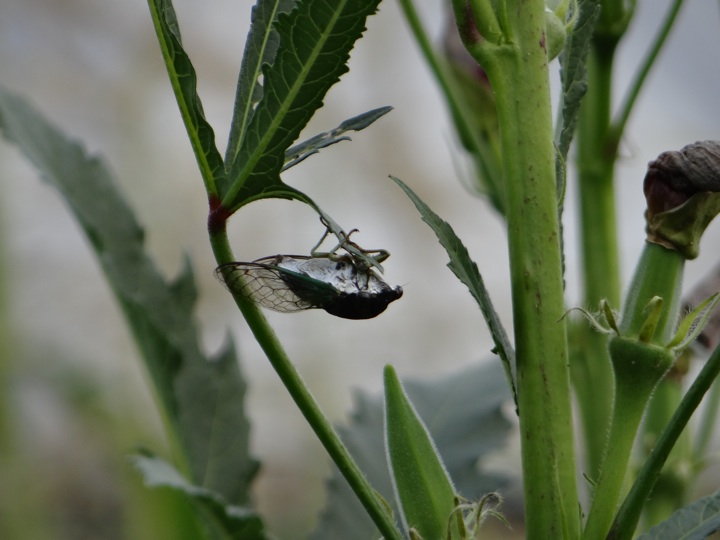Back in early Spring we were deluged with all manner of news reports concerning the emergence of Cicada Brood II, one of the periodic cicadas that emerge in 17 or 13 year cycles. You recall the stories about shoveling carcasses off the sidewalks, the roar of noise, people who talked about eating them… I don’t know about your situation, but it seems like in our area of Carroll County, there was very little activity.
As I was out harvesting in the veg garden at my PA farm a couple weeks ago, I heard the unmistakable burr of a cicada (or “locust “as we called them in New York) and managed to snap a photo before I got too close and it flew out of range. Because we mostly hear about the periodic cicada, we may not realize that there are actually OTHER cicadas that emerge as well on a yearly basis. For example, the Swamp Cicada emerges every year. The periodic cicadas in the news are distinguished particularly by their red eyes. This cicada lacks that feature.
The life cycles is somewhat similar in that the adults make slits in bark near the ends of tree branches where the tiny termite sized cicada feeds on sap, then it emerges and falls to the ground where it digs in deep enough to feed on the tree roots. At the appropriate time for the species, in this case a matter of many months, it emerges as a nymph and climbs and tree where it waits to shed its exoskeleton. As a kid, you probably found this and picked them off the tree trunks. The adults, called imagoes, emerge from the shed exoskeleton with wings and spend their time looking for a mate.
The cicada song is a male performance; they have drum like organs in their abdomens called timbals connected to flexor muscles that pull the timbals in and out of shape, the sound being magnified by the cicada’s mostly hollow abdomen. Females can make wing-generated noises but that isn’t as noticeable.
https://soundcloud.com/john-beetham/swamp-cicada-tibicen-tibicen



